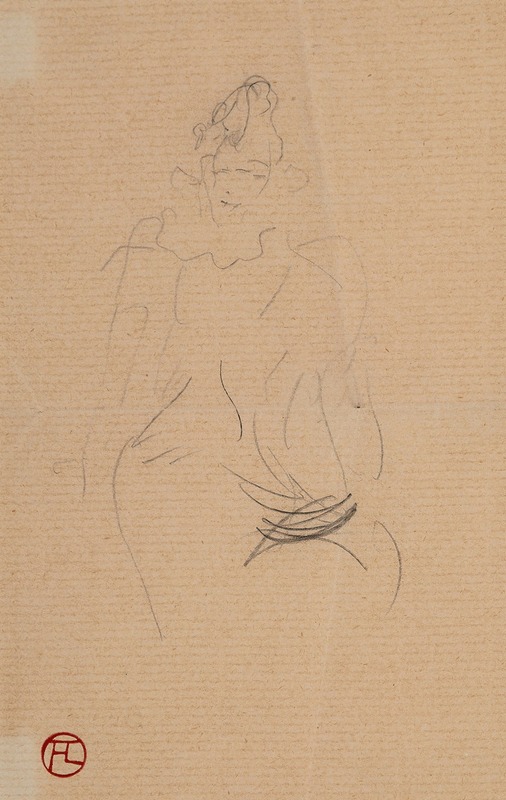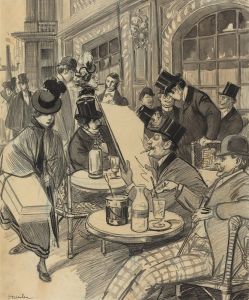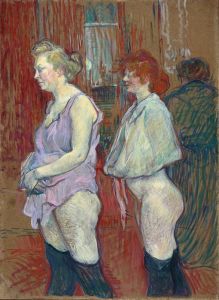
Silhouette de femme
A hand-painted replica of Henri de Toulouse-Lautrec’s masterpiece Silhouette de femme, meticulously crafted by professional artists to capture the true essence of the original. Each piece is created with museum-quality canvas and rare mineral pigments, carefully painted by experienced artists with delicate brushstrokes and rich, layered colors to perfectly recreate the texture of the original artwork. Unlike machine-printed reproductions, this hand-painted version brings the painting to life, infused with the artist’s emotions and skill in every stroke. Whether for personal collection or home decoration, it instantly elevates the artistic atmosphere of any space.
Henri de Toulouse-Lautrec, a prominent French painter, printmaker, and illustrator, is renowned for his depictions of Parisian nightlife in the late 19th century. One of his works, "Silhouette de femme," reflects his unique style and approach to capturing the essence of his subjects. Toulouse-Lautrec's art is characterized by its bold lines, innovative use of color, and keen observation of human behavior, all of which are evident in this piece.
"Silhouette de femme" is a testament to Toulouse-Lautrec's ability to convey emotion and character through minimalistic yet expressive forms. The painting showcases a woman's silhouette, emphasizing the contours and posture that suggest her mood and personality. Toulouse-Lautrec often focused on the female form, capturing the grace and complexity of his subjects with a sensitivity that was ahead of his time.
Toulouse-Lautrec was deeply influenced by the Impressionists, yet he developed a distinctive style that set him apart. His work often included elements of Japonisme, which was popular in Europe during his lifetime. This influence is visible in "Silhouette de femme" through the use of flat planes of color and the emphasis on line over detail, reminiscent of Japanese woodblock prints.
The artist's choice of subject matter often reflected his fascination with the bohemian lifestyle of Montmartre, where he spent much of his life. Toulouse-Lautrec was a regular at the cabarets, theaters, and dance halls of Paris, and his art frequently depicted the performers and patrons of these venues. While "Silhouette de femme" does not explicitly depict a scene from this world, the elegance and poise of the figure suggest a connection to the sophisticated and sometimes provocative atmosphere of Parisian nightlife.
Toulouse-Lautrec's personal life was marked by physical challenges and a bohemian lifestyle, both of which influenced his artistic output. Born into an aristocratic family, he suffered from a genetic disorder that stunted his growth and left him with a distinctive appearance. This, combined with his immersion in the vibrant and often hedonistic culture of Montmartre, informed his empathetic portrayal of society's outcasts and entertainers.
"Silhouette de femme" is a reflection of Toulouse-Lautrec's mastery in capturing the human spirit with economy and grace. His ability to distill the essence of his subjects into simple yet powerful forms has left a lasting impact on the art world. Today, Toulouse-Lautrec is celebrated as a pioneer of modern art, and his works continue to be studied and admired for their innovative approach and emotional depth.
While specific details about "Silhouette de femme" such as its creation date, current location, or provenance might not be widely documented, the painting remains an important part of Toulouse-Lautrec's oeuvre. It exemplifies his skill in using silhouette and form to convey the subtleties of human expression, a hallmark of his artistic legacy.


















